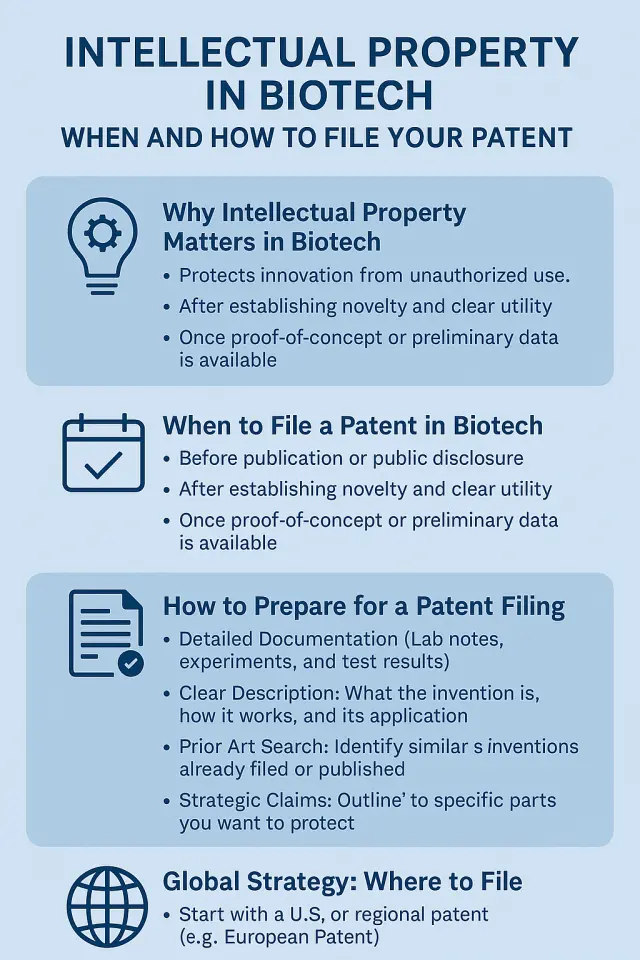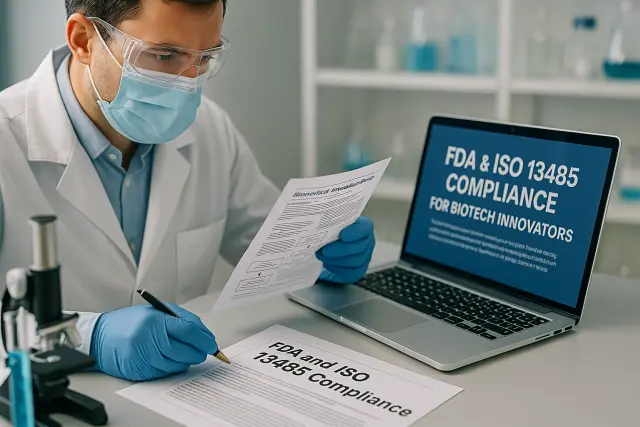Biotech is a field driven by innovation—and innovation thrives on protection. Whether you’re a researcher in a university lab or a founder of a biotech startup, understanding when and how to file a patent can make or break the commercial success of your idea. This blog guides you through the critical steps to secure your intellectual property (IP) in biotech.
📌 Why Intellectual Property (IP) Matters in Biotech
Biotech inventions often require years of R&D and significant investment. Securing IP rights through patents:
- Protects your innovation from unauthorized use.
- Attracts investors who value protected technologies.
- Helps secure licensing deals or partnerships.
According to WIPO, over 70% of biotech startups with early patent filings have a better chance of attracting Series A funding within 3 years.
⏳ When to File a Patent in Biotech
The right time is early—but not too early.
You should file a patent:
- Before publication or public disclosure of your invention.
- After establishing novelty and clear utility.
- Once proof-of-concept or preliminary data is available.
❗Note: Many countries, including the U.S., follow a “first to file” system—so early filing is crucial.
🛠️ How to Prepare for a Patent Filing
Before heading to a patent attorney or submitting a provisional application, ensure you have:
- Detailed Documentation: Lab notes, experiments, and test results.
- Clear Description: What the invention is, how it works, and its application.
- Prior Art Search: Identify similar inventions already filed or published.
- Strategic Claims: Outline the specific parts you want to protect.
💡 Tip: Consider filing a provisional patent first to secure a filing date while you complete the full specification.
🌍 Global Strategy: Where to File
Patent protection is territorial. If your biotech innovation has global potential:
- Start with a U.S. or regional patent (e.g., European Patent).
- Consider a PCT (Patent Cooperation Treaty) application to cover multiple countries.
This gives you 30 months from the first filing to decide in which countries you want to proceed.
💬 Final Thoughts
Filing a biotech patent is both a science and a strategy. Missing the right window can leave your invention vulnerable, while filing too early without data can weaken your claim. Work with IP attorneys who understand biotech—and always think of your patent as both a legal tool and a business asset.
Need Help?
Thinking of filing your first biotech patent? Reach out for a free consultation on IP strategy tailored to your stage and region.





